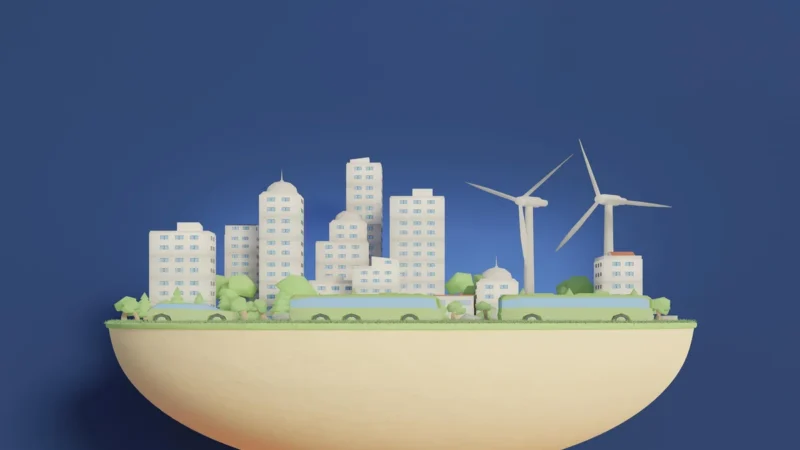Ecological Balance: Maintaining Ecosystem Health

1.Ecosystems in your surrounding area
Maintaining ecological balance is crucial for the health and sustainability of ecosystems. Ecosystems are intricate networks of living organisms, their interactions, and the physical environment. Achieving and preserving ecological balance ensures that these systems remain resilient, diverse, and capable of providing essential services to both humans and the environment. In this article, we will delve into the significance of ecological balance and explore practical strategies for maintaining ecosystem health.
2.Ecological Balance:
Ecological balance refers to the equilibrium among the different components of an ecosystem. This balance ensures that the relationships between organisms and their environment remain stable, allowing for the efficient cycling of nutrients, energy flow, and the successful reproduction of species. When ecosystems are in balance, they are more resilient to disturbances such as climate change, habitat loss, and pollution. This resilience, in turn, helps prevent the decline of species and the collapse of ecosystems.
3.The Role of Biodiversity:
Biodiversity, the variety of life within an ecosystem, is a key indicator of its health. High biodiversity signifies a robust ecosystem capable of adapting to changes and recovering from disturbances. Each species within an ecosystem has a unique role, or niche, that contributes to its functioning. Loss of even a single species can disrupt the delicate balance and lead to cascading effects throughout the ecosystem. Preserving biodiversity through habitat protection, restoration, and sustainable management is vital for maintaining ecological balance.
4.Sustainable Resource Management:
Human activities, such as deforestation, overfishing, and excessive resource extraction, can disrupt ecological balance. Sustainable resource management involves using resources in a way that meets current needs without compromising the needs of future generations. This approach helps prevent habitat destruction, maintains food chains, and supports the overall health of ecosystems. Implementing practices like responsible fishing, reforestation, and water conservation contributes to the maintenance of ecological balance.
5.Restoration and Rehabilitation:
When ecosystems are already degraded, restoration and rehabilitation efforts play a crucial role in bringing them back to balance. This involves interventions such as re-establishing native vegetation, creating artificial habitats, and removing invasive species. Restoration efforts help rebuild the intricate connections between organisms and the environment, enhancing ecosystem resilience and functionality.
6.Climate Action and Ecosystem Health:
The effects of climate change, including rising temperatures and altered precipitation patterns, can disrupt ecological balance. Taking climate action through reducing greenhouse gas emissions and adapting to changes is essential for maintaining ecosystem health. Ecosystems that are better able to cope with climate impacts are more likely to retain their balance and continue providing services such as clean water, air, and food.
we can conclude this, Ecological balance is a fundamental principle that underpins the health and stability of ecosystems. By valuing biodiversity, practicing sustainable resource management, engaging in restoration efforts, and addressing climate change, individuals, communities, and governments can contribute to the maintenance of healthy and resilient ecosystems. The choices we make today will shape the future of our planet’s biodiversity and the well-being of all its inhabitants.
FAQs
1. What is ecological balance, and why is it important for ecosystems?
Ecological balance refers to the equilibrium between the various components of an ecosystem, ensuring stable relationships between organisms and their environment. It’s essential because it promotes ecosystem resilience, stability, and the efficient cycling of nutrients and energy. When ecosystems are in balance, they are better equipped to withstand disturbances and support diverse life forms.
2. How does biodiversity contribute to maintaining ecological balance?
Biodiversity, the variety of species within an ecosystem, plays a critical role in maintaining ecological balance. Each species has a unique role or niche that contributes to ecosystem functioning. High biodiversity enhances ecosystem stability, as the interactions between species help regulate populations and maintain essential processes like pollination and nutrient cycling.
3. What can I do to support ecological balance in my local area?
You can make a positive impact by adopting sustainable practices in your daily life, such as reducing waste, conserving water, and supporting local conservation efforts. Additionally, you can participate in habitat restoration projects, avoid the use of harmful chemicals, and promote awareness about the importance of ecological balance within your community.
4. How can climate change disrupt ecological balance, and what can be done about it?
Climate change can alter temperature and precipitation patterns, affecting ecosystems and their inhabitants. Rising temperatures can lead to shifts in species distribution, disruptions in migration patterns, and increased occurrences of extreme weather events. To address this, individuals and communities can reduce their carbon footprint, support renewable energy sources, and advocate for policies that mitigate climate change impacts.
5. Can ecosystems that have been degraded be restored to achieve ecological balance?
Yes, ecosystems that have suffered degradation can be restored through various methods. Habitat restoration, which involves planting native vegetation and removing invasive species, can help rebuild lost connections within the ecosystem. Additionally, creating artificial habitats and reintroducing native species can contribute to the recovery of ecological balance and enhance ecosystem functionality.


